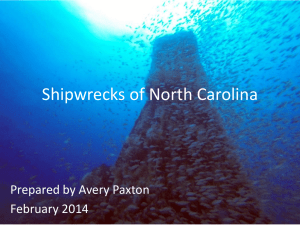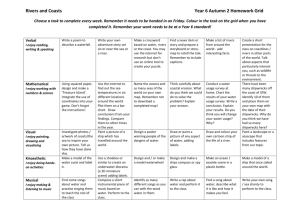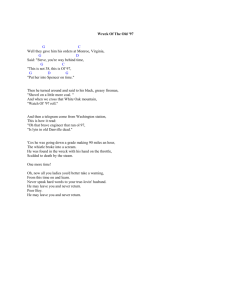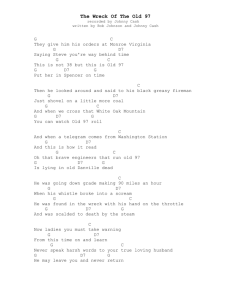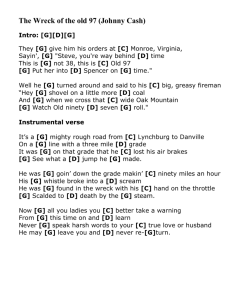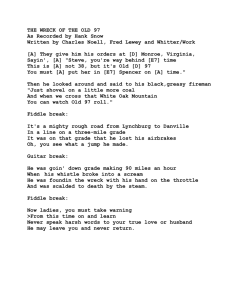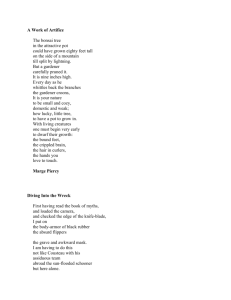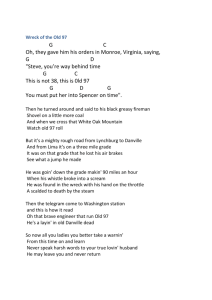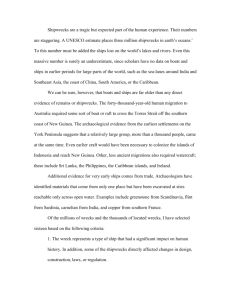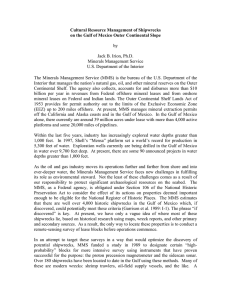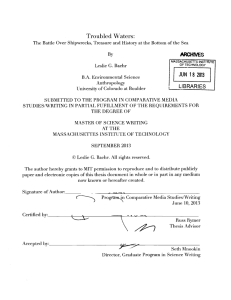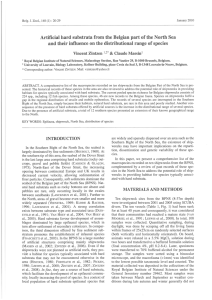The wrecking of De Visch
advertisement
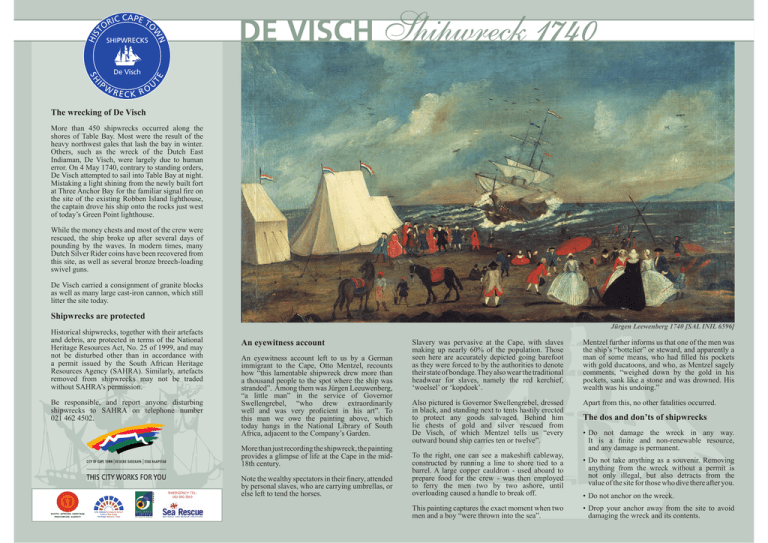
SH De Visch I PW Sh Shipwreck k 174 174 17 7740 40 RECK RO N SHIPWRECKS O TE C APE T W HIS T IC OR U The wrecking of De Visch More than 450 shipwrecks occurred along the shores of Table Bay. Most were the result of the heavy northwest gales that lash the bay in winter. Others, such as the wreck of the Dutch East Indiaman, De Visch, were largely due to human error. On 4 May 1740, contrary to standing orders, De Visch attempted to sail into Table Bay at night. Mistaking a light shining from the newly built fort at Three Anchor Bay for the familiar signal fire on the site of the existing Robben Island lighthouse, the captain drove his ship onto the rocks just west of today’s Green Point lighthouse. While the money chests and most of the crew were rescued, the ship broke up after several days of pounding by the waves. In modern times, many Dutch Silver Rider coins have been recovered from this site, as well as several bronze breech-loading swivel guns. De Visch carried a consignment of granite blocks as well as many large cast-iron cannon, which still litter the site today. Shipwrecks are protected Historical shipwrecks, together with their artefacts and debris, are protected in terms of the National Heritage Resources Act, No. 25 of 1999, and may not be disturbed other than in accordance with a permit issued by the South African Heritage Resources Agency (SAHRA). Similarly, artefacts removed from shipwrecks may not be traded without SAHRA’s permission. Be responsible, and report anyone disturbing shipwrecks to SAHRA on telephone number 021 462 4502. Jürgen Leewenberg 1740 [SAL INIL 6596] An eyewitness account An eyewitness account left to us by a German immigrant to the Cape, Otto Mentzel, recounts how “this lamentable shipwreck drew more than a thousand people to the spot where the ship was stranded”. Among them was Jürgen Leeuwenberg, “a little man” in the service of Governor Swellengrebel, “who drew extraordinarily well and was very proficient in his art”. To this man we owe the painting above, which today hangs in the National Library of South Africa, adjacent to the Company’s Garden. More than just recording the shipwreck, the painting provides a glimpse of life at the Cape in the mid18th century. EMERGENCY TEL: 082 990 5963 Note the wealthy spectators in their finery, attended by personal slaves, who are carrying umbrellas, or else left to tend the horses. Slavery was pervasive at the Cape, with slaves making up nearly 60% of the population. Those seen here are accurately depicted going barefoot as they were forced to by the authorities to denote their state of bondage. They also wear the traditional headwear for slaves, namely the red kerchief, ‘woelsel’ or ‘kopdoek’. Mentzel further informs us that one of the men was the ship’s “bottelier” or steward, and apparently a man of some means, who had filled his pockets with gold ducatoons, and who, as Mentzel sagely comments, “weighed down by the gold in his pockets, sank like a stone and was drowned. His wealth was his undoing.” Also pictured is Governor Swellengrebel, dressed in black, and standing next to tents hastily erected to protect any goods salvaged. Behind him lie chests of gold and silver rescued from De Visch, of which Mentzel tells us “every outward bound ship carries ten or twelve”. Apart from this, no other fatalities occurred. The dos and don’ts of shipwrecks • Do not damage the wreck in any way. It is a finite and non-renewable resource, and any damage is permanent. To the right, one can see a makeshift cableway, constructed by running a line to shore tied to a barrel. A large copper cauldron - used aboard to prepare food for the crew - was then employed to ferry the men two by two ashore, until overloading caused a handle to break off. • Do not take anything as a souvenir. Removing anything from the wreck without a permit is not only illegal, but also detracts from the value of the site for those who dive there after you. This painting captures the exact moment when two men and a boy “were thrown into the sea”. • Drop your anchor away from the site to avoid damaging the wreck and its contents. • Do not anchor on the wreck.
